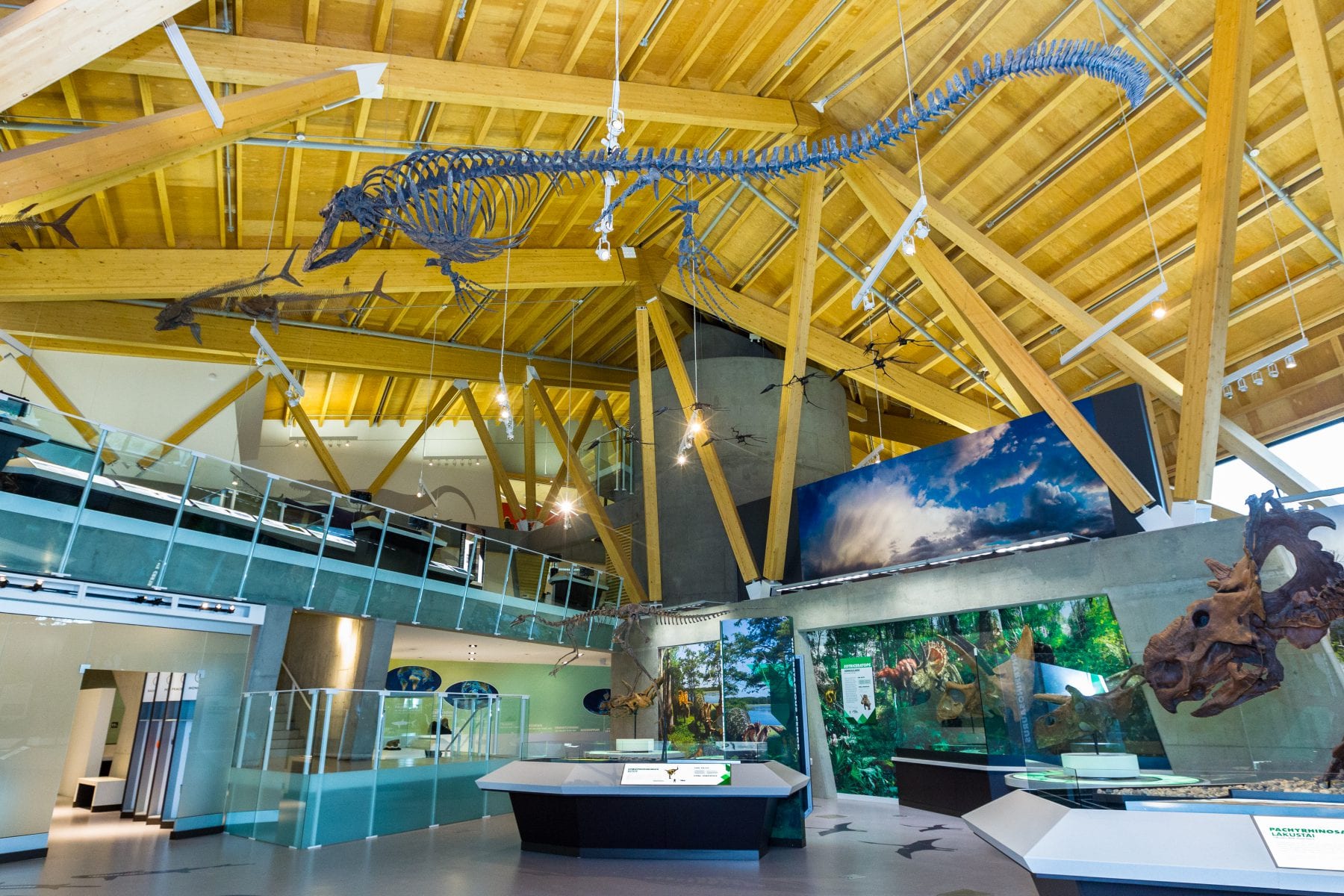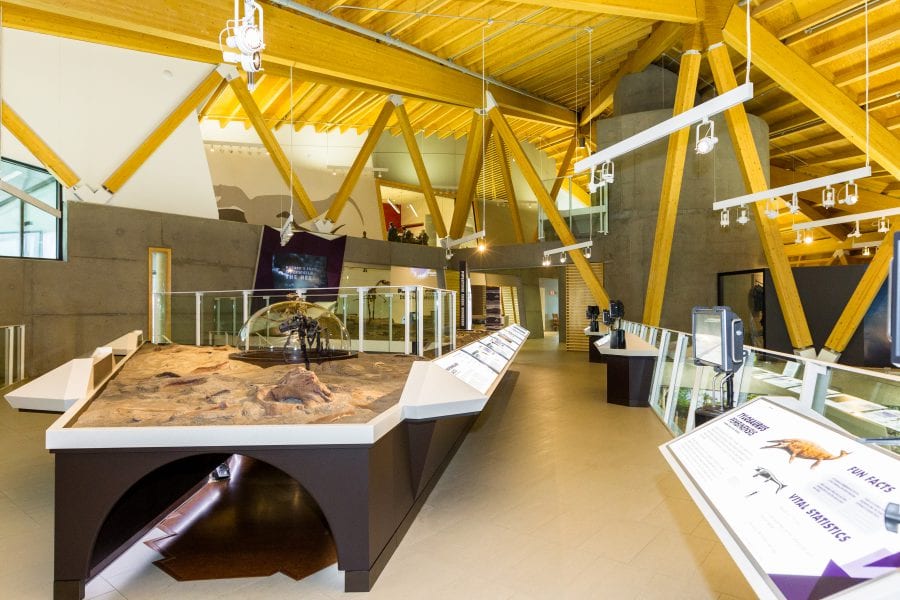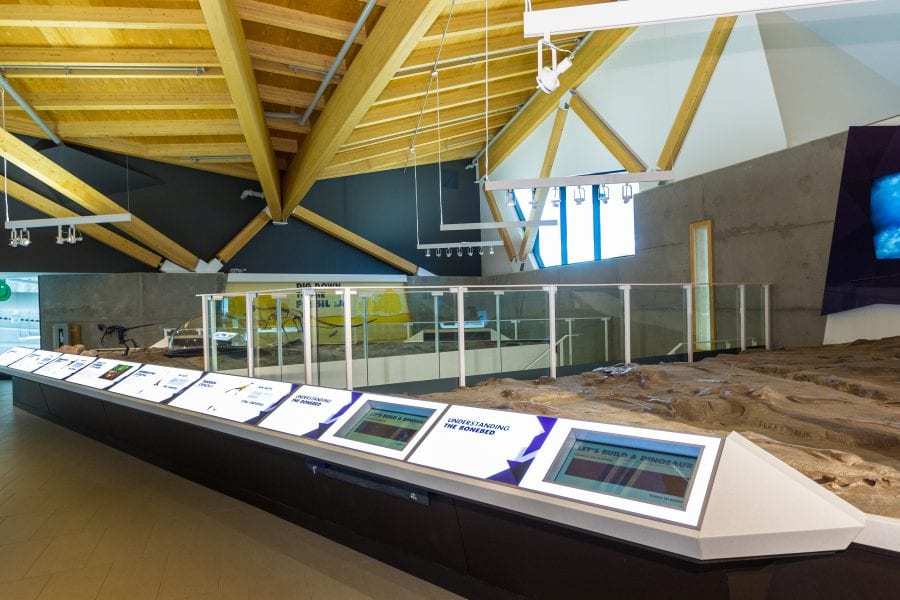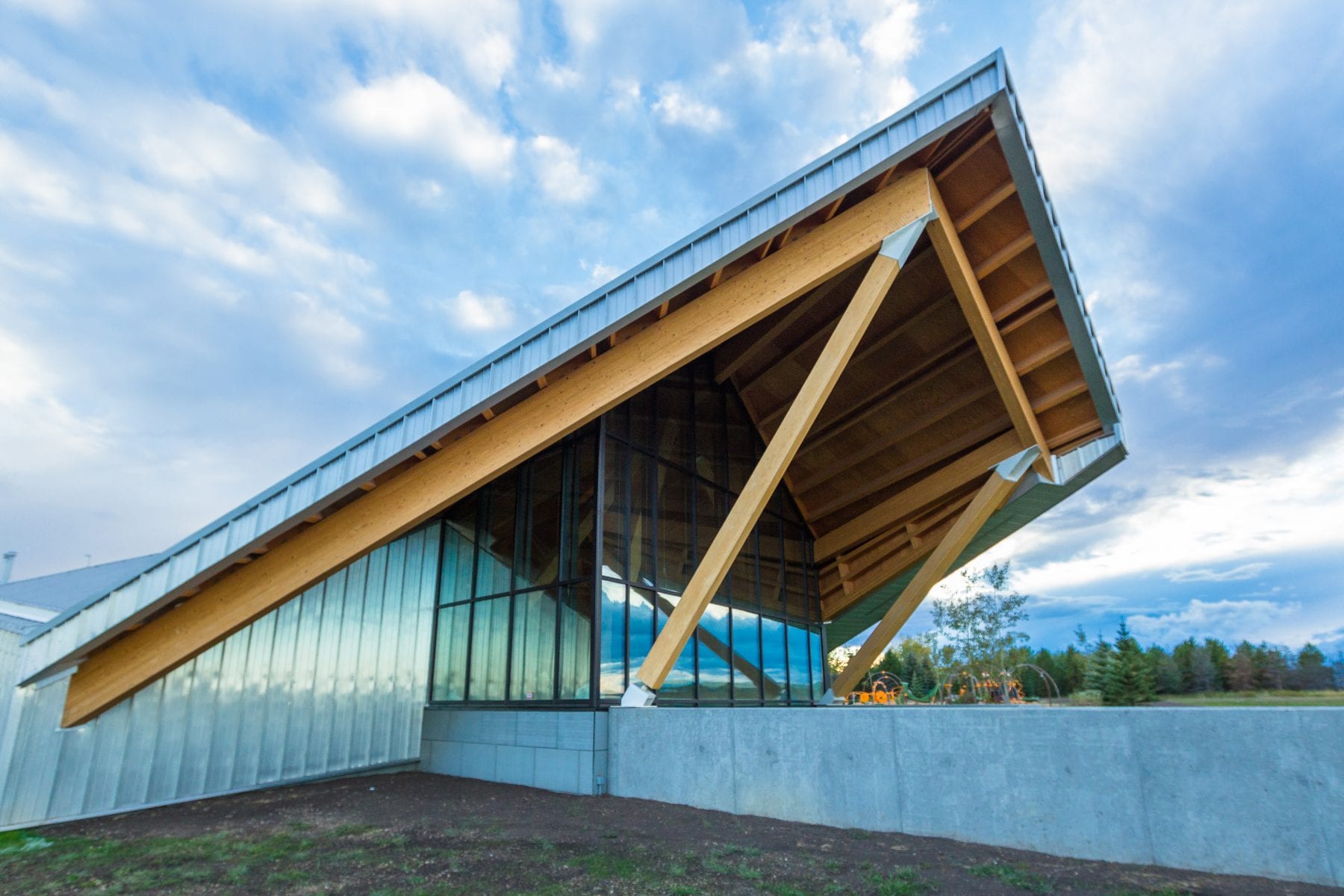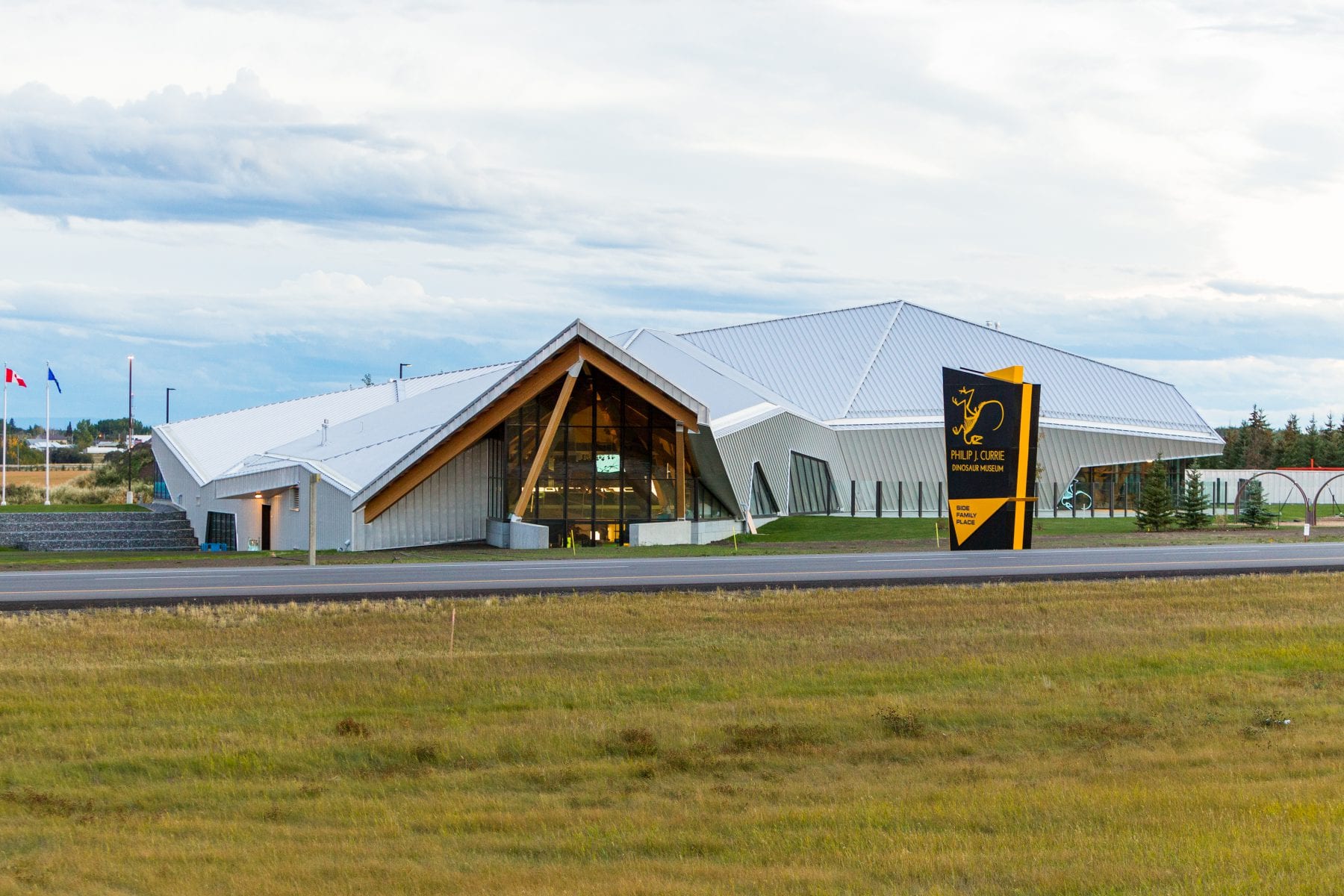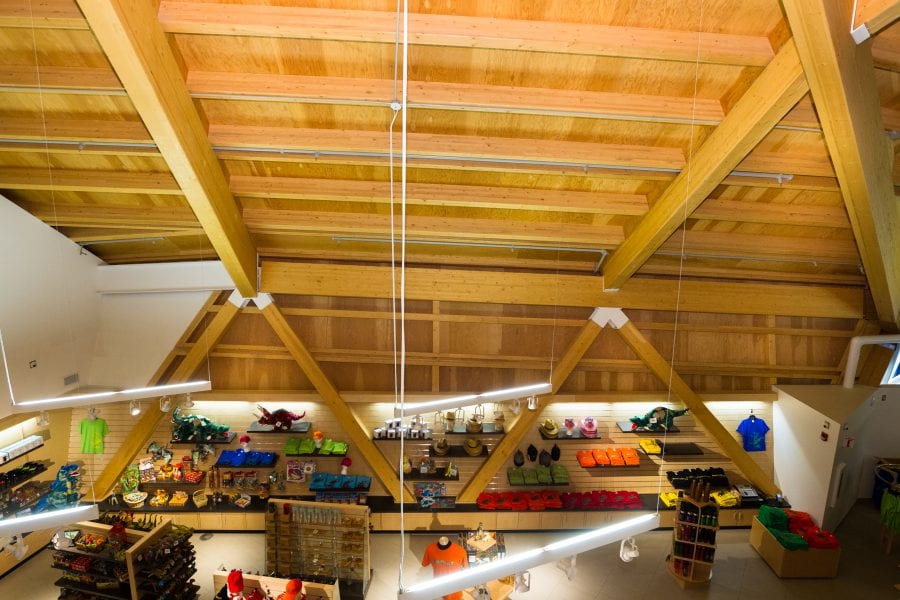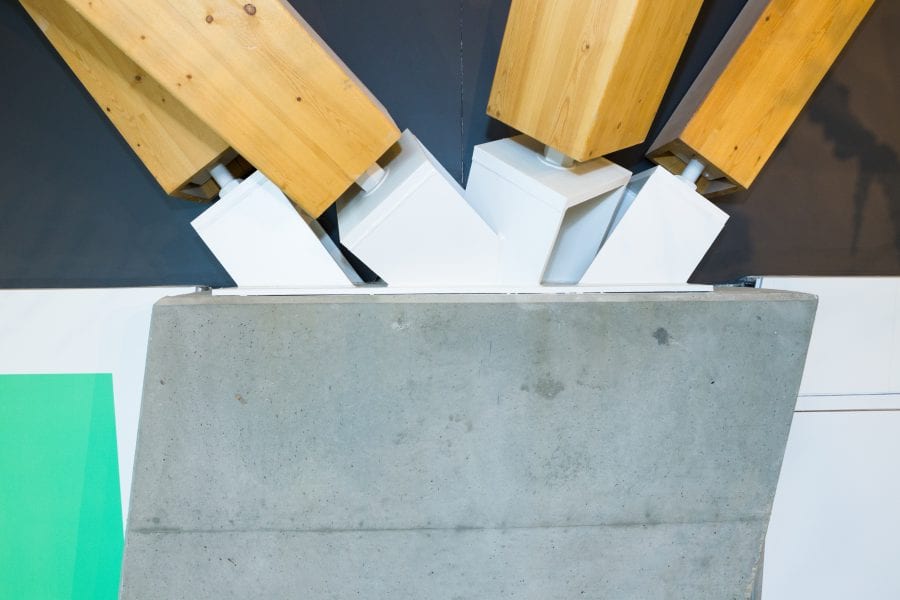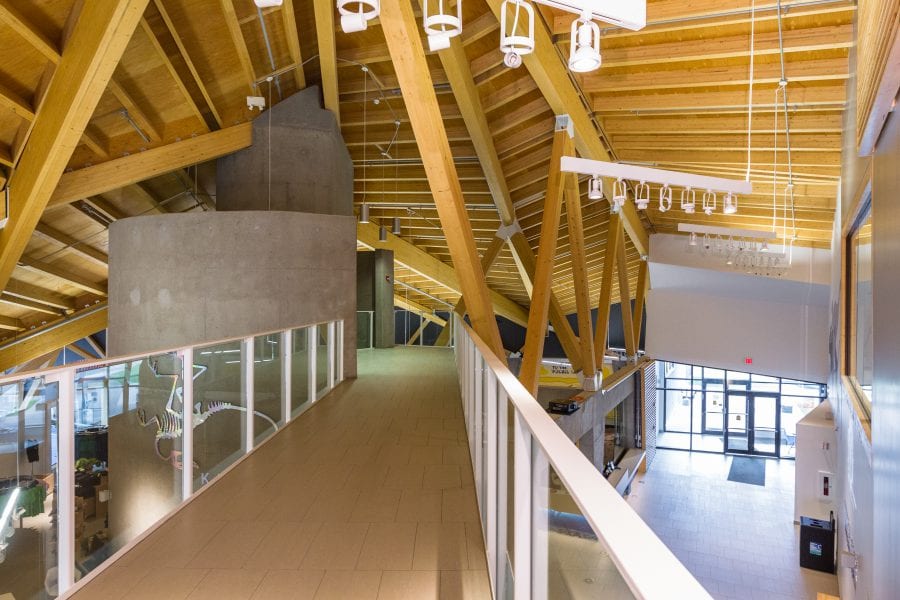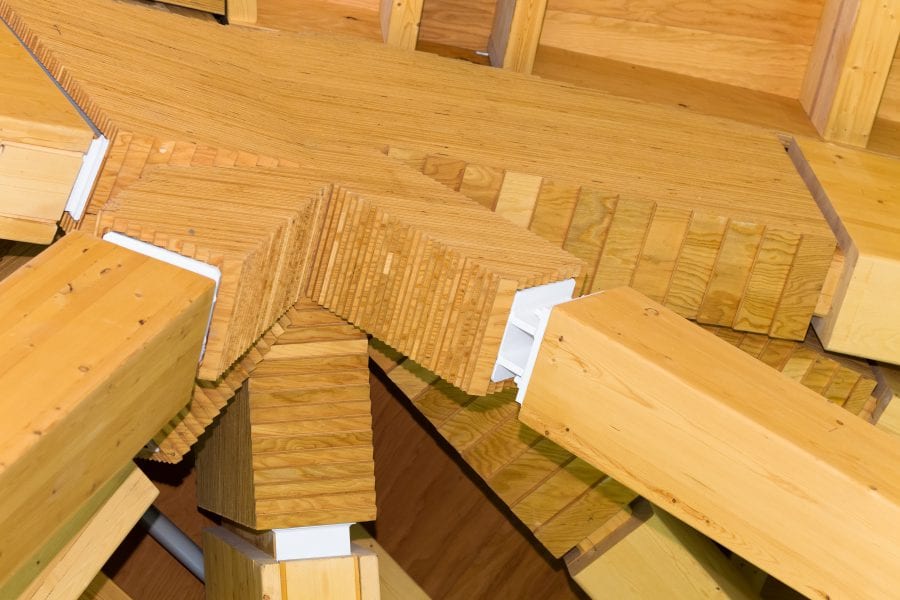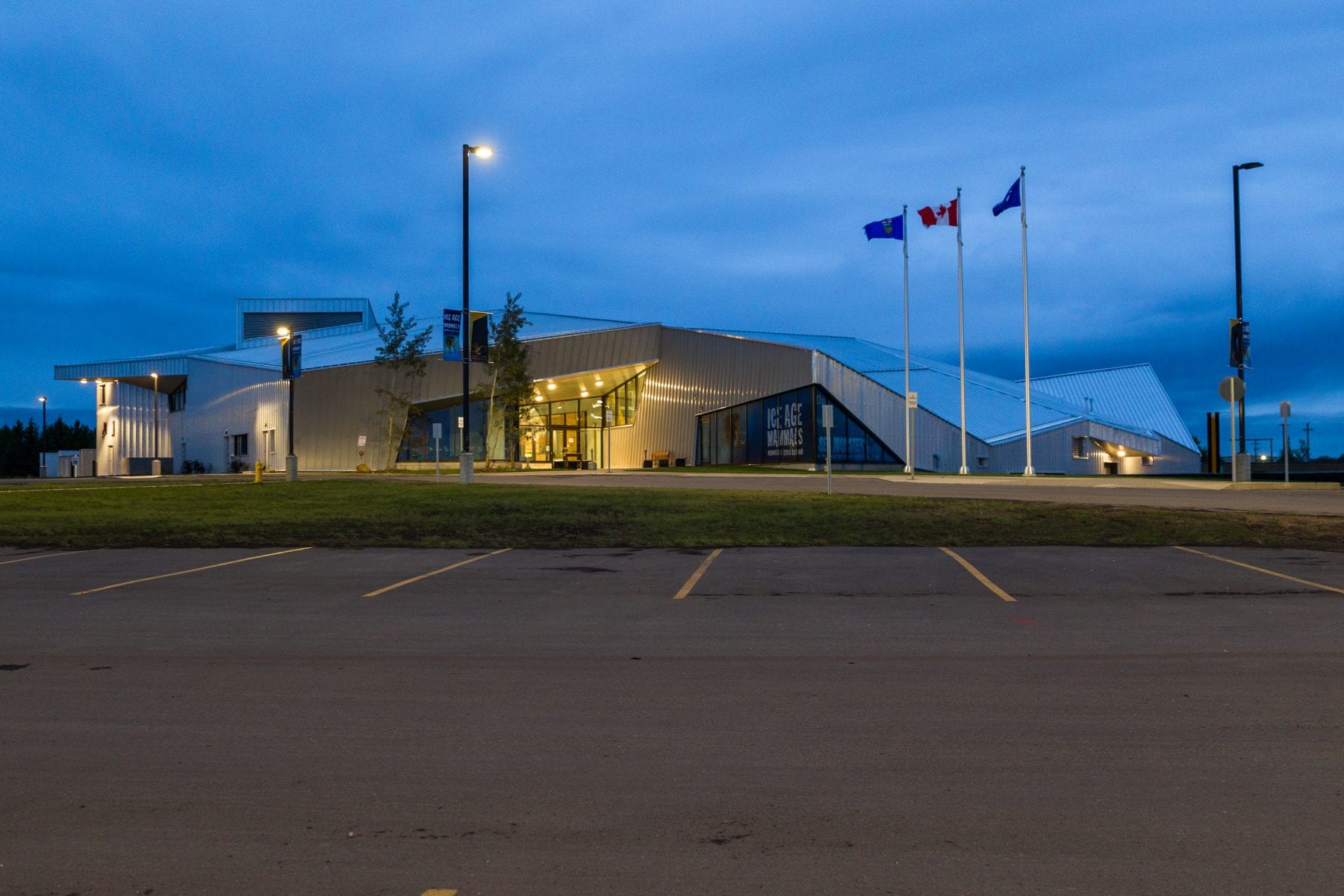One of the world’s foremost education centres for paleontology, the Philip J. Currie Dinosaur Museum rests on the ancient Pipestone Creek bonebed in Northern Alberta. The museum’s geometrically-complex exposed roof mimics a dinosaur’s skeleton – prefabricated modular timber panels are supported by angled glue-laminated beams, linked with custom computer-cut laminated plywood connection “nodes”.
Project Essentials
- LocationWembley, AB
- ClientCounty of Grande Prairie
- ArchitectsTeeple Architects and Architecture Arndt Tkalcic Bengert
- Size29,060 ft² (2,699 m²)
- BudgetC$22 million
- Sustainable FeaturesTargets LEED Gold
